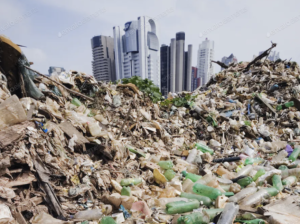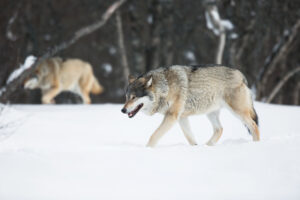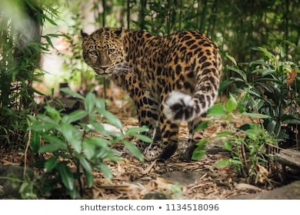
Shattering Life: The True Impact of Habitat Fragmentation


Chelsea Xie
What is Habitat Fragmentation?
Usually, habitat and fragmentation are separate words. So it might be a bit confusing when they are put together in one term. Let’s break it down. A habitat is the home of plants and animals, and it often contains the factors they need for survival. Fragmentation is when something is broken up, such as shattered glass. The originally connected pieces are no longer together, and lie separate and scattered all over the floor. When we add these two definitions together, we get exactly what habitat fragmentation is: when the homes of plants and animals are broken up and lie disconnected across a region.

What causes it?
Habitat fragmentation can have natural and human-related causes. The most common natural causes are wildfires. Animals are forced to flee their habitat, and the plants who are unable to run away are burnt badly, often unable to recover. However, human causes are much more common and permanent. In the image below, we can see that deforestation has severely fragmented this region. Unfortunately, urbanization is the main culprit. As the human population grows, we expand our cities, suburbs, and roads into the natural habitat of many species, permanently damaging their fragile ecosystem.

How does it affect the wildlife?
The main negative impact of habitat fragmentation is biodiversity loss. By cutting up an originally continuous region with roads, housing developments, and farmlands, we limit the area of land that plants and animals can live on. The smaller the area, the less species it can support with its limited resources. Consequently, biodiversity plummets in regions that are sliced apart. Genetic drift, one of the factors that impacts biodiversity, drops because animals and plants are unable to travel to other parts of the ecosystem; instead, they are confined to small and crowded habitats. Due to the animal’s inability to travel, they end up losing genetic diversity, since they are unable to interact with other populations.

This diagram from Blooming Boulevards effectively demonstrates the impact of deforestation. Each forest has species that live in the interior, and species that live in the exterior. The interior is shielded from the outside world, and has very specific conditions that endemic(native) species need to survive. When forests are fragmented, the exterior area increases, forcing interior species to become exterior species. This either forces the interior species into smaller areas where they compete with each other for dwindling resources, or forces the interior species to the perimeter, where they may not be able to survive.
Local examples of habitat fragmentation
- Roads that go through nature
The roads that cut through woodlands are the most prevalent examples of habitat fragmentation. In order to access the other side of the forest, animals must cross the dangerous road, and too often they end up as roadkill, yet another death that could be avoided.

- Farmland
Food is love and food is life. Without it, we couldn’t survive. Unfortunately, the vast fields we cultivate crops on is yet another example of habitat fragmentation. Often, forests must be cut down to make more space for farmland, leaving animals stranded in isolated habitats. Agriculture is a huge part of many states’ economy, which means that animals and plants are losing their homes all over the US.

How it’s being combatted
- Underpasses and Overpasses
Often, highways cut through forested land, fragmenting a habitat in one long slice. Since it’s impossible to get rid of a highway all together, some states have implemented wildlife overpasses(underpasses are less common). This allows animals to cross the highway safely and naturally. These overpasses prevent animal deaths, improve genetic drift, and are a great solution to habitat fragmentation.

- Urban greenspace
The habitats of species that reside near or within a city are often disrupted or partially destroyed when the city builds new roads, housing developments, or expands. Of course, we can’t remove the city, but we can increase urban greenspace. Urban greenspace are small patches of nature within a city that connect the parks and habitats to one another, sort of like little natural highways. Not only can animals now live in the city with less exposure to humans, they can travel from one park to another. Singapore is a great example of this, and nature is present in nearly 50% of their city, in the form of urban forests, nature reserves, and leafy rooftops.

How we can help
The best thing we can do is advocate for policies that increase urban greenspace and fund the building of overpasses. We can truly make a significant impact by convincing leaders with protests and appeals. You could attend a city council meeting and make a case for increasing green cover in the city, or building a nature overpass on one of the expressways or highways. While this may not be approved immediately, consistent efforts do make a difference.
Water is my favorite metaphor for environmental advocacy. A little drop of water constantly dripping on a rock can make a hole. A huge torrent of water can carve canyons. You can. We can.
Disclaimer: The opinions, beliefs and viewpoints expressed by the various authors and forum participants on this web site are their own and do not necessarily reflect the opinions, beliefs and viewpoints of SAFE Worldwide.





